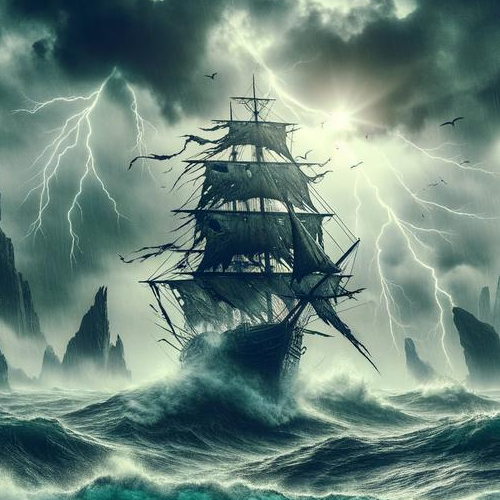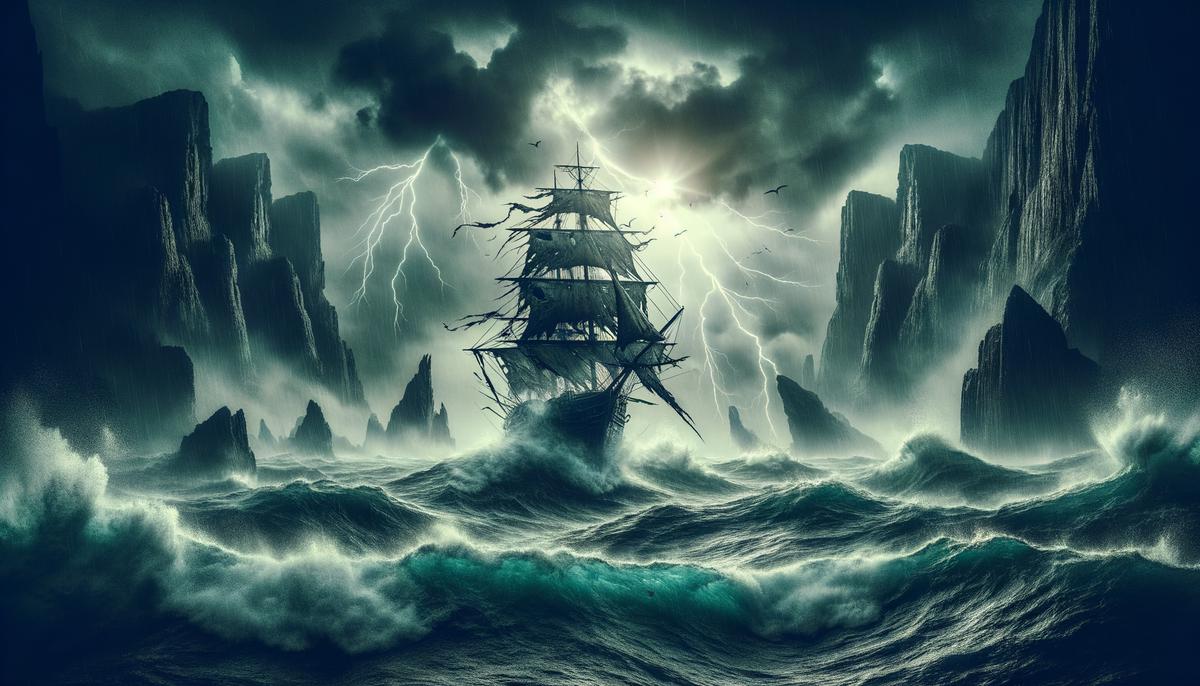Origins and Historical Context
The Flying Dutchman legend originates in the Netherlands during the Dutch maritime empire's rise. It centers on Captain Hendrick van der Decken, who allegedly defied a fierce storm while rounding the Cape of Good Hope. Cursing the tempest and challenging God's wrath, van der Decken doomed his ship to sail eternally.
As Dutch naval power waned and Britain's grew, the legend found new audiences. The Cape of Good Hope became the notorious setting where van der Decken and his crew were forever trapped. Some versions claim he uttered blasphemies, while others say he murdered a mutinous crew member.
Historical records are scarce, if not nonexistent. The story's dark allure clung to oral traditions and sailors' tales. By 1843, Richard Wagner's opera immortalized the ghostly ship for wider audiences.
Reports claim this cursed vessel has been spotted from the Cape of Good Hope to Australia's shores. Even future King George V of England allegedly saw the phantom ship, with log notes detailing an eerie apparition.
Sightings are often attributed to mirages, tricks of light, and tired sailor eyes, fancifully called 'fata morgana.' Yet fascination persists. Over time, the tale gathered elements—a captain seeking redemption, doomed seafarers, and a desperate quest for true love—that later influenced popular culture.
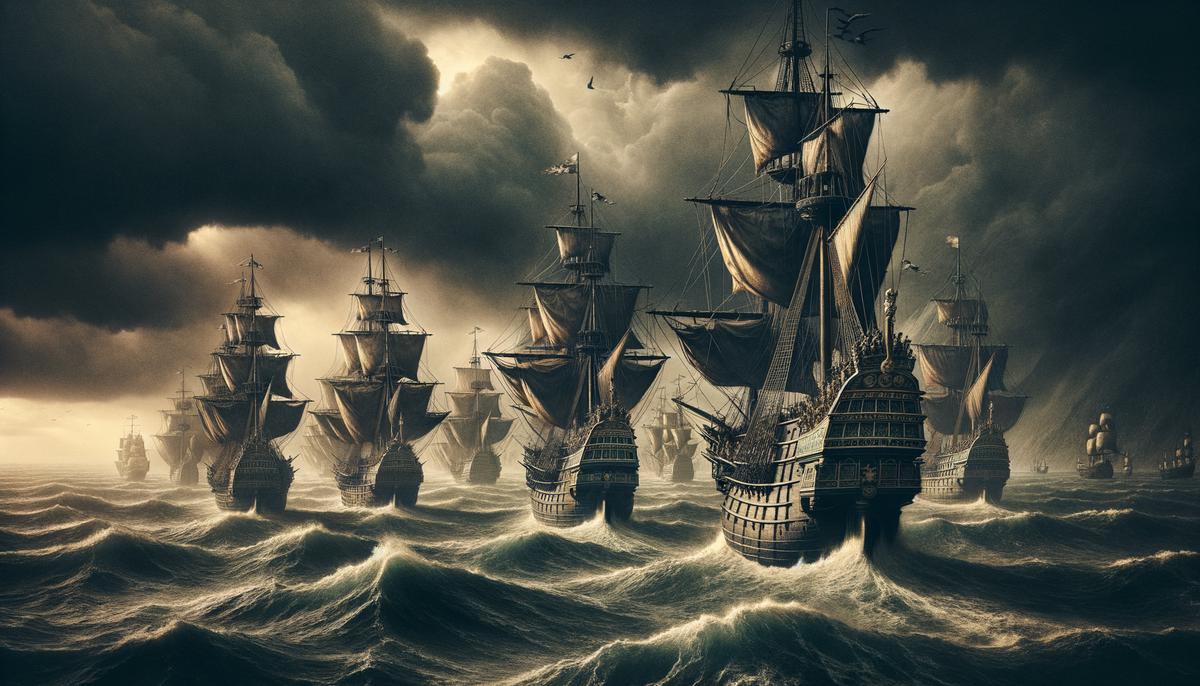
The Curse and Its Variations
The curse is the heart of the Flying Dutchman legend. Captain Hendrick van der Decken's blasphemous defiance of a storm led to his eternal damnation. He and his crew were condemned to an endless voyage, forever adrift without hope of reaching port or finding peace.
Variations color the curse:
- One version tells of van der Decken killing a mutinous crewman, an act the sea punished.
- Another suggests the Devil himself condemned the Dutchman to roam the oceans until Judgment Day.
The ghostly crew is consistently portrayed as damned souls. Some depict them as skeletal figures, others as pale, sorrowful wraiths with penetrating eyes. They're bound to their grim task, forever repeating their ill-fated journey.
In some versions, the curse can be lifted. One legend states that if the captain finds a woman who loves him purely and deeply, remaining faithful unto death, the curse might break. This possibility has inspired countless romantic retellings, most notably in Wagner's opera.
Different cultures have left their unique marks on the legend. Dutch versions might focus on a stubborn captain challenging God and fate, while British adaptations often emphasize the melancholy of doomed sailors and the eerie presence of the ghost ship.
"The Flying Dutchman continues to haunt our collective imagination, a ghostly reminder of the temptation to defy fate and the slim possibility of redemption."
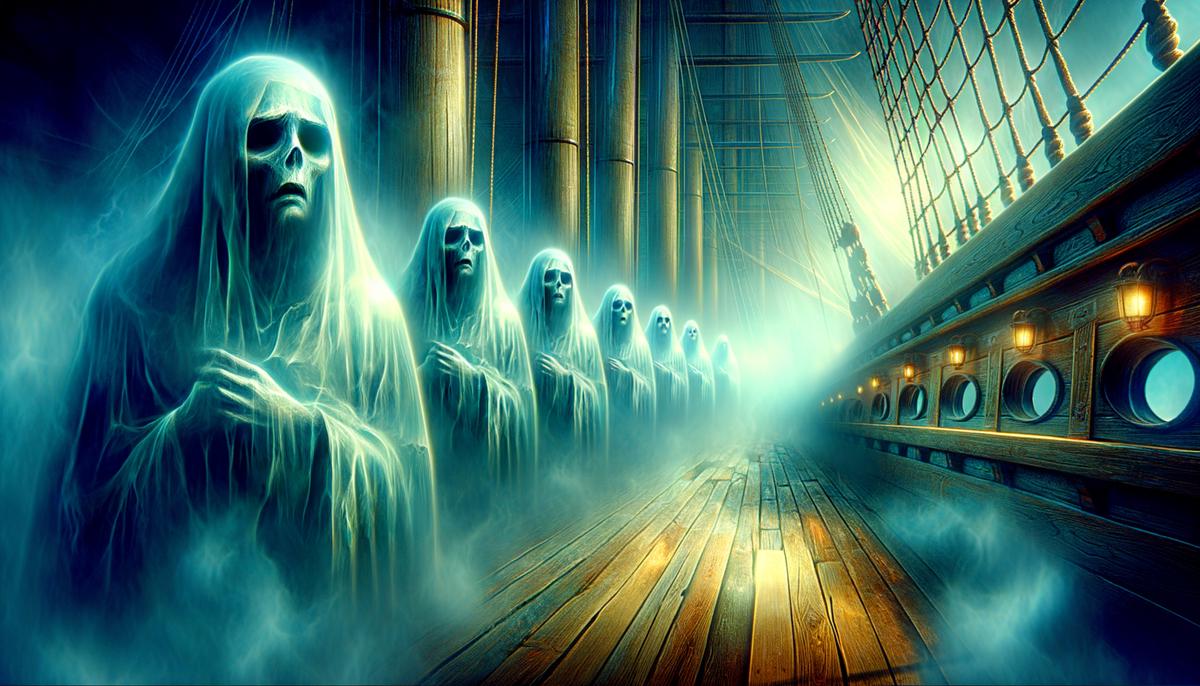
Famous Sightings and Scientific Explanations
Among the ghostly tales, Prince George of Wales's sighting stands out. On July 11, 1881, the future King George V claimed to have encountered the phantom ship off Australia's coast. His log notes describe an inexplicable red glow that briefly illuminated a spectral ship before vanishing.1
This sighting wasn't isolated. Over centuries, sailors have reported seeing a ghostly vessel in the stormy waters of the Cape of Good Hope. These accounts describe a spectral ship with tattered sails, glowing lanterns, and a silent crew.
Notable reported sightings include:
- The crew of the SS Warrimoo in 1911 during dense fog
- Beachgoers off Cape Town's coast in 1939
Science offers rational explanations for these sightings. Many can be attributed to a phenomenon known as "fata morgana," a complex mirage that distorts distant objects. This optical illusion occurs when layers of cold and warm air mix over water, bending light and projecting ships as ghostly apparitions.2
The eerie, shimmering effect, combined with the heightened sensations of sailors in treacherous waters, could easily lead to the projection of ghost stories onto natural phenomena.
Whether it's a mirage or an actual specter, the tale of the Flying Dutchman continues to captivate us, illuminating the uncharted reaches of our imagination.
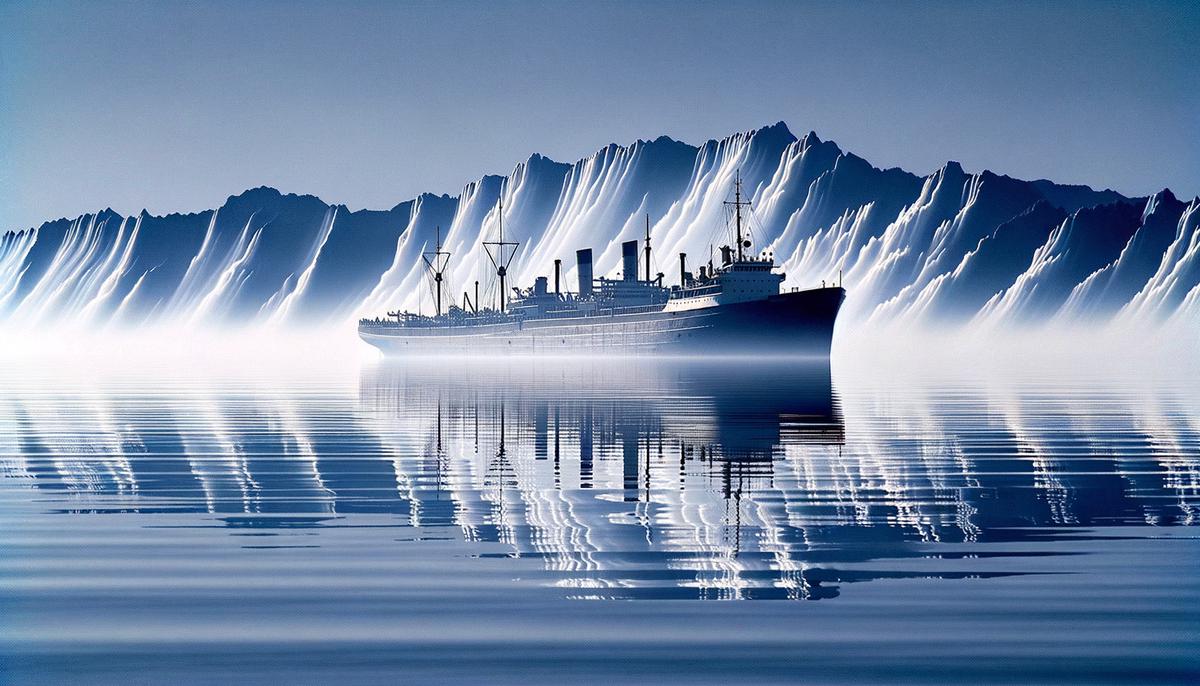
Cultural Impact and Modern Adaptations
The Flying Dutchman has deeply permeated popular culture, infusing itself into myriad forms of artistic expression. Richard Wagner's opera, Der Fliegende Holländer, stands as a masterpiece, transforming the legend into a complex story of love, redemption, and eternal damnation.
Literature, too, has found inspiration in the haunting story. Samuel Taylor Coleridge's The Rime of the Ancient Mariner and Sir Walter Scott's poem "Rokeby" both nod to the mythical captain's plight.
In modern media, the tale has found new life:
- Disney's Pirates of the Caribbean franchise features the Dutchman as the vessel captained by Davy Jones
- Children's shows like SpongeBob SquarePants include a comedic yet eerie version of the Flying Dutchman
The legend's enduring appeal lies in its exploration of timeless human fears and fascinations—eternal punishment, divine wrath, and the quest for redemption. These themes resonate across cultures and eras, making the tale adaptable and relatable.
Whether portrayed through Wagner's thunderous crescendos or Disney's CGI wizardry, the Dutchman's legacy proves a rich vein for creativity and storytelling. It embodies our struggle against fate, the burden of remorse, and the faint hope for salvation—story threads that powerfully resonate with audiences across time.

The tale of the Flying Dutchman continues to resonate, weaving through our shared fears and hopes. It stands as a timeless reminder of humanity's struggle against fate and the enduring quest for redemption. Whether seen as a ghostly apparition or a product of our imagination, the legend sails on, captivating us with its haunting story.
- Bassett B. The Wandering Dutchman. Folklore. 1892;3(1):87-100.
- Menon TK. Fata Morgana and Looming. Weather. 1969;24(5):159-166.
